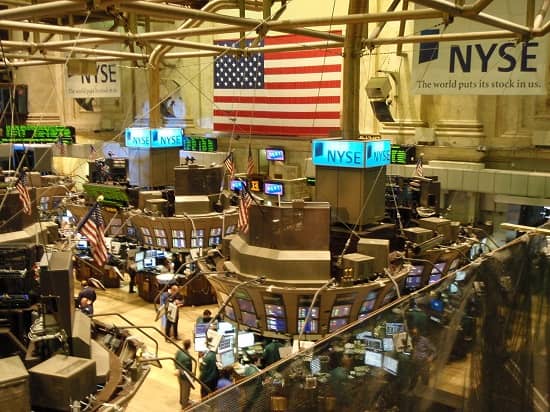Why Gold is a Safe Buy in Times of Economic Uncertainty
18/09/2018Daniel Fisher
Free & fully insured UK Delivery. Learn more
Secure & flexible payments. Learn more

Buyback Guarantee Learn more
Economic uncertainty seems to be a given in the times that we live in. Over the last ten years, economic uncertainty across the globe has hit record highs. According to a study conducted by the news network, CNBC in 2016, uncertainty has risen by around 60% in the last five years alone. These figures beat the uncertainty levels of 2008, which we all recognise as the peak of the global recession, spurred on by the US sub-prime mortgage crisis that sounded the death knell for big-ticket investment banks like Lehman Brothers and brought banks like Northern Rock to its knees. The recent spike in uncertainty was exacerbated by events like Brexit, which has had an impact not just in Europe, but across the economies of Asia, Japan, Oceania and the Americas.
The findings of the study revealed that uncertainty went up in the US economy by 19.8% between 2015 and 2016. During the same period, Brazil recorded a spike of 22.6%, China by 83.2%, Australia – 44.6%, France – 28.8% and India – 4.7%. However, the largest increase in uncertainty was recorded in the United Kingdom – 160%.

Uncertainty in global stock markets sees investors move their money to gold
Back in 1983, Ben Bernanke published a paper that attempted to model the effects of uncertainty on the economy. Bernanke, some you may recall was the Chairman of the US federal reserve at the time and also a professor at Stanford University. Bernanke observed that certain macroeconomic factors such as oil price fluctuations, monetary and fiscal policy adjustments and even the entry of new technologies were disrupters and triggered investors to move their investments across asset classes and global markets. Even more disastrous are geopolitical events like war and the threat of terrorism. In addition, the world is today threatened by the increasing incidence of natural disasters. A case in point is the 2011 tsunami that struck Japan. That tsunami alone caused losses of $360bn and is considered to be the most expensive natural disaster of all time.
Find out how to protect yourself with tax free gold. Download our FREE 7 step cheatsheet here.
Well, first of all, gold is a tangible asset that one can take physical possession of and store. Gold has been a creator of value since time immemorial. We are well aware that gold was used extensively as a metal of choice for coinage across the world throughout history. The value of gold, therefore, continues to remain stable, and demand for gold is driven by the value it commands in the eyes of human beings.
Gold is scarce and this is yet another factor that adds value to the precious metal. Rising demand and scarcity of supply creates an unbeatable value proposition that cannot be matched by other asset classes. While the price of gold may fluctuate, its intrinsic value in the eyes of an investor remains. On the other hand, stocks, bonds, debt papers, ETFs, and even cash deposits represented by fiat money, are only able to derive their value from the trading price in the market. They have no intrinsic value.
Secondly, other investments are affected by inflation or rising and falling interest rates. Gold is well insulated from these macroeconomic forces. When we see gold price trends over the years, we realise that the price of gold moves inversely to the US dollar. This means when the dollar falls, the price of gold goes up. Therefore, investing in physical gold is a great hedge against inflation and can also create purchasing power for the investor in the years to come.

Holding physical gold can help beat uncertainty and inflation
At times of economic uncertainty, several investors may start to worry about the value of their investments in asset classes like equities. As they start to pull out, the prices start to fluctuate wildly, creating volatility. Most of the value locked in these virtual asset classes cannot be accessed physically, so one may have little or no control over them. At such times, gold investments are generally more secure, as it is a stable asset class and it is something that you can hold in a physical form. Once again, a quick look at gold prices over the years shows us ups and downs, but these losses and gains even out over a period of time and gold is considered to be a stable investment over time.
Most importantly, many investors view their purchases of gold as a constant. They believe that even if we see a total economic collapse around the globe at some point in time, gold will be that one thing which will still hold value. In our opinion, that is reason enough to hold gold.
At Physical gold, our team of experts have many years of experience in dealing with precious metals. You’re in safe hands knowing we have membership of various trade associations including the Royal Numismatic Society. They are able to advise you on the best way to build a gold portfolio with regular investments that will stand the test of time. Call us on 020 7060 9992 or drop us a line to get in touch with the team. We always take your investment goals into consideration and advise you on the percentage of your financial portfolio that should be invested in gold, and on how to get the best buys by taking advantage of the markets.
Image credits: Wikimedia Commons and Michael Steinberg
Live Gold Spot Price in Sterling. Gold is one of the densest of all metals. It is a good conductor of heat and electricity. It is also soft and the most malleable and ductile of the elements; an ounce (31.1 grams; gold is weighed in troy ounces) can be beaten out to 187 square feet (about 17 square metres) in extremely thin sheets called gold leaf.
Live Silver Spot Price in Sterling. Silver (Ag), chemical element, a white lustrous metal valued for its decorative beauty and electrical conductivity. Silver is located in Group 11 (Ib) and Period 5 of the periodic table, between copper (Period 4) and gold (Period 6), and its physical and chemical properties are intermediate between those two metals.